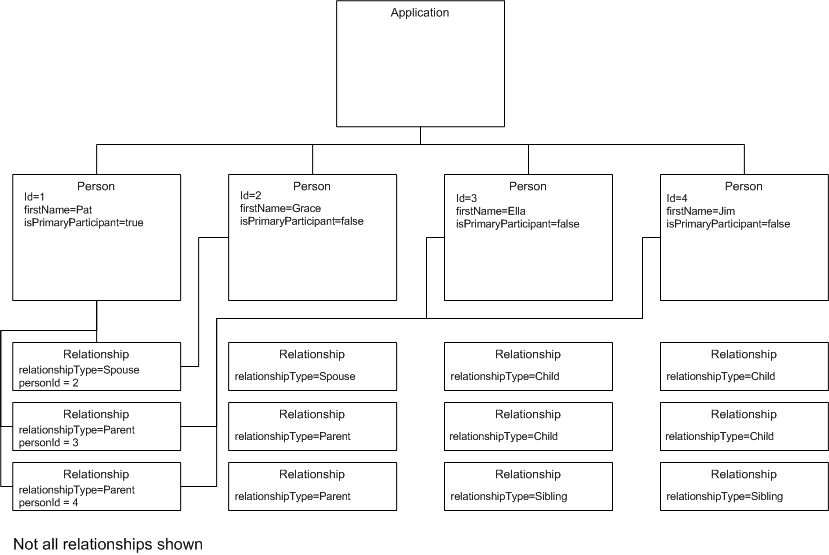When mapping citizen data to case evidence or PDF appication forms, the first task is to examine the desired output for the citizen's data, i.e., as case evidence or a completed application form. The next step is to examine how a citizen's data is stored in the CDS as part of the intake and screening process. Once you know the the information required in case evidence or PDF application forms and the information stored in the CDS, you can then create logical maps between the forms of data.
The purpose of the screening and intake process is to help citizens apply for benefits. At the very minimum, an application form or case evidence will require the names of the members in a household and their relationships to the person applying for benefits. IEG scripts capture this information about a citizen and store it in the CDS according a pre-defined schema. Understanding How Data Is Stored in the CDS displays an example of a data structure in the CDS for a single benefit application and includes the members of a household and their relationships.
